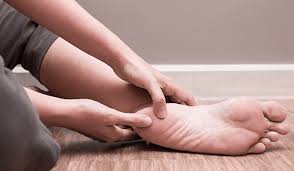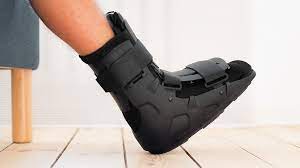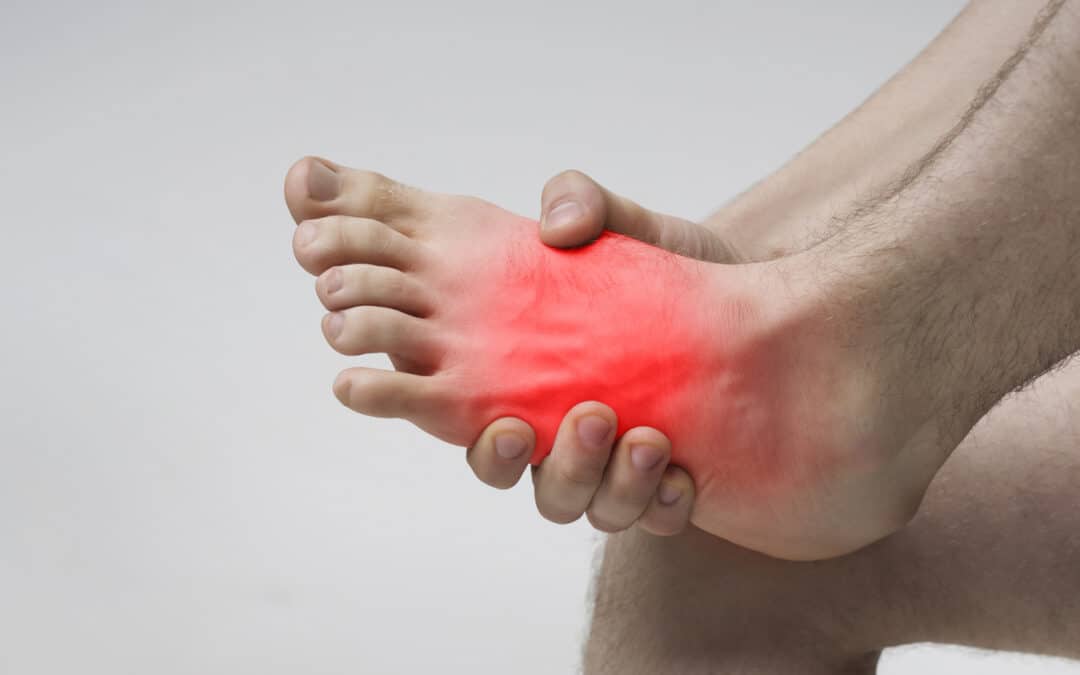Plantar Fascitis – that heel pain that just won’t go away!
Do you suffer from pain at the bottom of your heel? Does it get worse with the first few steps in the morning or after prolonged standing or walking? If so, you may be suffering from plantar fasciitis.
What is plantar fasciitis?
Plantar fasciitis is the irritation and inflammation of the plantar fascia on the bottom of our foot. Plantar fascia is a thick band of tissue that spans from each of our toes to the tip of our heel bone. The purpose of our plantar fascia is to provide structure and rigidity to the foot. This is especially important when we are walking, running, or jumping. Unlike a muscle, the plantar fascia is limited in its ability to stretch. Therefore, when too much tension or stretching takes place, it causes irritation, inflammation, and eventual pain.
What are the symptoms of plantar fasciitis?
Typically, plantar fasciitis will begin as a gradual onset of pain near the bottom of our heel. It is important to note that other conditions can also present with a pain under the heel, however, plantar fasciitis often presents with:
- sharp or dull ache at the bottom of the heel
- pain is worse with the first few steps in the morning
- pain is worse after inactivity such as sitting at our work desk.
- pain may gradually decrease with the more walking you do but then worsen with excessive walking, standing or running.
- walking with a limp, attempting to reduce the amount of pressure on your heel.
- specific point of tenderness

What causes plantar fasciitis?
This injury is often multifactorial, meaning it may be due to multiple reasons. For example, overuse or overtraining may cause irritation. This can include dramatically increasing the time or distance of a walk or run, or even increasing the amount of resistance in your exercises. Also, regularly performing high-impact activities such as running, jumping, or dancing. Performing these activities on a regular basis causes repetitive stretch and tension through the plantar fascia, which can result in irritation. Poor footwear can also result in plantar fasciitis due to increased pressure at the heel of our foot. Similarly, trying out new footwear that is different than we are used to may trigger irritation. Biomechanical imbalance may be at fault, such as having flat feet, tightness or weakness in calf and intrinsic foot muscles.
Physiotherapy treatments for plantar fasciitis?
Treatment will depend on the cause of your plantar fasciitis. Physiotherapy is often the first line of defence in treatment plantar fasciitis.
1.Activity modifications: Your physiotherapist will likely recommend activity modifications, such as limiting your running distance or amount of high-impact activities.
2.Use of modalities: the use of ice will likely be suggested to alleviate inflammation and pain. The use of acupuncture, ultrasound, and shockwave therapy may also help to reduce inflammation and stimulate healing of the plantar fascia.

3.Manual therapy: myofascial tissue release of calf muscles and the plantar fascia to allow for better flexibility in the area can be performed by a physiotherapist. Dependent on assessment, they may also help to correct other biomechanical faults that be causing your plantar fasciitis.
4.Home exercise program: An individualized exercise program created by a physiotherapist to appropriately load your plantar fascia and prevent re-aggravation. This will likely involve strengthening and stretching of the muscles surrounding your ankle and foot. Give this exercise a try for starters!
5.Foot insoles, compression socks or braces: the use of a compression sock for example may help to reduce your heel pain, and allow you to carry on with your day or continue to do the activities you need to do. Night splints have also shown to be very effective in treating plantar fasciitis. Here is an example of a plantar fasciitis night splint
Your content goes here. Edit or remove this text inline or in the module Content settings. You can also style every aspect of this content in the module Design settings and even apply custom CSS to this text in the module Advanced settings.

How long will it take to see improvements and get back to normal?
It is common for most people to begin to see reductions in their heel pain within the first 3 weeks of physiotherapy treatment. Of course, each individual is different, and it will depend on the duration you have been dealing with heel pain and the severity of the injury. Although pain reduction is great, this is only indicating that the inflammation has subsided. The healing of the plantar fascia will continue long after the pain has been reduced, ranging from 3-6 months. This outlines the importance of continuing physiotherapy treatment and exercises as prescribed.
If you are suffering from nagging heel pain that just won’t go away, call our Alliston or Tottenham clinics and one of our physiotherapists will perform a thorough assessment and develop an individualized treatment plan for you.

